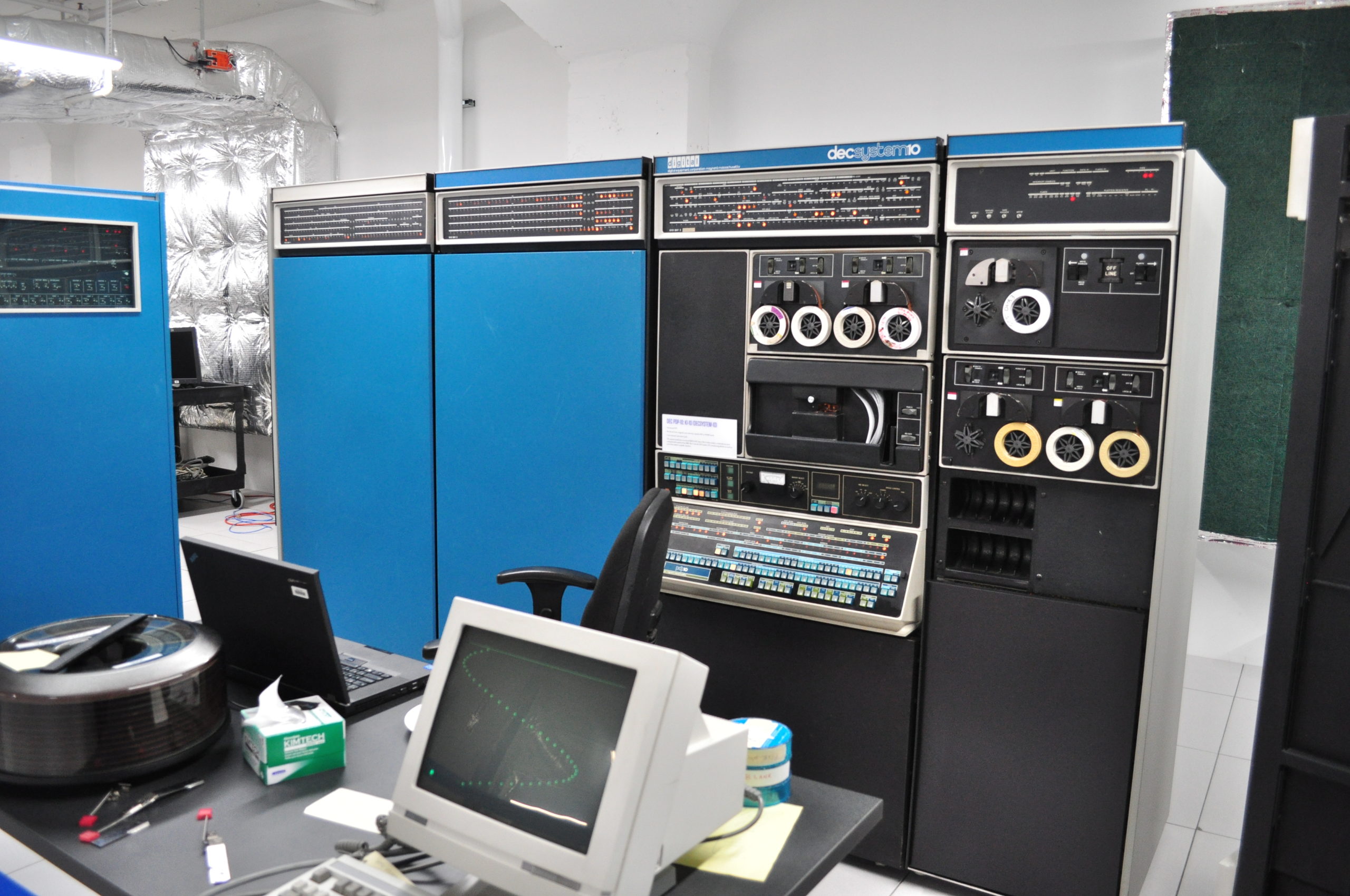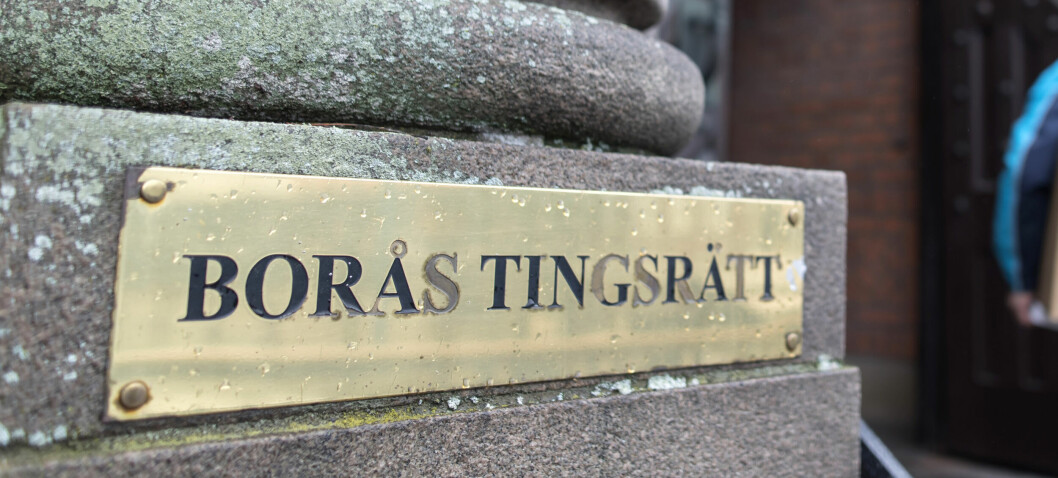The three friends and the story of the computer game Stugan
HISTORY OF TECHNOLOGY. Long before the introduction of the home computer in Sweden, three young people sat in a terminal hall at KTH and put together the very first Swedish-language computer game. This is the story of the mythical Cottage.
“You are standing on a bridge somewhere in Småland. Behind your sun-warmed back you go water skiing. A church bell (which you do not see) strikes twelve. You see a house straight ahead. ”
With those lines begins Stugan, the first adventure game for computers written entirely in Swedish.
The year is 1977 and the brothers Kimmo Eriksson, Viggo Eriksson (now Kann) and their friend Olle Johansson are 10, 13 and 14 years old. They have been admitted into a world that their peers have not yet seen.
– There were no home computers. If you were lucky, you had parents with access to computer power, says Olle Johansson.
In their case, it is at Stockholm’s computer center, QZ, on KTH’s campus. The brothers Eriksson’s father Henrik works there as a system programmer, and mother Gerd works in the same premises as a teacher of numerical analysis and computer science at KTH.
At QZ, there is a powerful computer system by the standards of the time. A handful of metal cabinets house the main computer Oden, a PDP-10 from the American DEC. The three friends are immediately captivated.
– In third grade, I gave a lecture in the fun class on how to program in Basic. I thought it was the most fun thing you could do, says Kimmo Eriksson.
Got a ride to KTH
On the weekends, they get in their parents’ car and roll from Sollentuna to KTH’s campus, where there is a basement room with writing terminals in orange. They enter commands on a keyboard and get feedback on long strips of print.
– We sat at home and wrote the code by hand, then we were pushed in on the weekends and could sit at each terminal and write down what we worked on during the week, says Viggo Kann.

Soon the writing terminals will be replaced by modern terminals with screens with luminous green text, and the guys in contact with Colossal Cave Adventure, or simply Adventure. It is a groundbreaking game by the American William Crowther that combines his interests in role-playing, cave exploration and programming and single-handedly creates the genre of text adventure.
These can best be described as a kind of model for point and click games such as King’s Quest and Monkey Island. In text adventure, the player must explore a world and solve mysteries, but everything is presented entirely in writing. The player enters commands such as “Go north” or “Take the shovel” to interact with his surroundings.
The guys at QZ have already started developing their own games. Kimmo has built a slot machine, Viggo a variant of hanging old man and Olle a hobo chess.
– After Adventure, we wanted to do something bigger together. Then we needed a frame story, and that was the beginning of Stugan, says Viggo Kann.
First, they build a virtual arcade hall where the player can move between the mini-games and meet various strange characters along the way. Soon the interest in writing a quirky and humorous story takes over, and the arcade hall is phased out.
The cottage is growing. The player can take the elevator up and down between the floors and at any time a pirate can show up and snatch objects. The goal is to be elected to the mythical cottage council.
– There are deep layers of teenage humor, irony and strange associations, says Olle Johansson. There was no big plan. We met, brainstormed and came up with a lot of crazy things to add.
QZ users flock
By now, his parents have acquired a Texas Silent Writer. The computer terminal is in the bedroom at home in Sollentuna and can be connected to QZ via an acoustic connection. A modem sends and receives data as audio signals transmitted over the handset. Output comes on rolls of wax paper.
The parents are complaining. The CPU power on the QZ costs, the phone is constantly busy and the wax paper is consumed in drifts. Viggo and Olle turn it over to be able to use the same strip several times.
At the same time, the other users on QZ flock to the Swedish-language Adventure copy. The game is said to have become so popular that it became profitable for QZ, as users pay an hourly rate to sit at the terminals or call in to the mainframe.
Thanks to the mainframe environment, developers can work in a surprisingly modern way and refine their work as they go along. QZ has its own discussion forum, the KOM system. There is a special room dedicated to Stugan, Thorvalds stugråd, named after one of the characters in the game.

The source code for the cottage on the large chunks of printing paper needed. Photo: Tobias Ohls
In the cottage council, players report bugs, but discussions about how to solve the puzzles in the game are strictly forbidden. There is also some frustration. The trio was particularly saddened by the constant question of whether a strange or difficult-to-understand feature of the game was “a bug or a feature”.
– One day we programmed out of pure fucking a small animal that comes running and shouts “Help! I do not know if I am a bug or a feature ”and then jumps into the water and drowns. Then the discussions calmed down, says Olle Johansson.
It is often commands that do this. Someone sees a door and writes “unlock”, another writes “use the key”. The game must be programmed to understand the exact phrases in order to react correctly.
– Commands we thought were obvious were expressed by others in a completely different way. When we realized that, we started recording all the commands, says Olle Johansson.
It became a kind of early data analysis. They see how users try to interact with the game and get stuck, and then customize the code to make it easier for them.
– Like the elevator in the game, it has a button where it says “hit”. We had thought that the player would write “press the button”, but it turned out that many just wrote “hit”. When we saw it, we added so that it also worked, says Kimmo Eriksson.
This type of iterative development is possible because QZ is a connected environment. The program is stored and run on the mainframe so that an update of the code reaches everyone.
In the coming decades, game development will change. On Commodore 64’s or Nintendo’s game consoles, the game comes on a cassette or diskette as a finished product. Some ex-post updates were not practicable.
– Those who develop online games today can work in the same way, they carefully analyze what you do and adapt the game. But during the many years when ones and zeros were distributed on physical media, that possibility did not exist, says Olle Johansson.
The cottage was developed until 1979
The development of Stugan continues from and until 1979. Then the game has a loyal following who connect with QZ to try to be elected to the cabin council. But the game would probably have fallen into oblivion, if the journalist Erik Fichtelius had not stumbled across it a few years later.
Like Olle, Viggo and Kimmo, he has been fascinated by Adventure, and a few years into the eighties, he begins to spend time on the KOM system and QZ.
– It was where I came across the guys who made their own version of Adventure. It might have been a bit more quirky and easier, but it was exactly the same idea, says Erik Fichtelius.
He gets in touch with the trio and conducts an interview on the KOM system. It will be an article about Stugan which is published in 1985 in Linjeflyg’s customer magazine Upp & Ner and it quickly gives rings on the water.

Växjö resident Jan Älmeby reads Fichtelius’ article and becomes fire and flames. He is head of the then newly started IT company Scandinavian PC Systems, today part of the accounting company Visma SPCS, and sees a business opportunity.
SPCS has started selling IBM home computers in Sweden, and now they need to fill them with software. A Swedish-language game would fit perfectly.
– Janne found us and thought the game was spotless, says Olle Johansson. He came driving to Sollentuna in his big Saab. When we agreed, he ran up a PC with a floppy disk drive that we could use to program on.
The guys have to rewrite the game from scratch in another version of the Basic programming language for it to work on PC. At the same time, they discover a dilemma they have avoided so far when they developed games for a powerful mainframe.
– We were used to a completely different access to memory and computing power, says Olle Johansson.
Finally, they managed to squeeze Stugans by now comprehensive code on some five-inch disks and SPCS starts selling the game. It will soon end up on every other home computer in Sweden. SPCS translates the game into Norwegian, Danish and English, but it never has the same impact abroad.
– We have no control over the spread. The cottage was for a while Sweden’s most pirated game, but the sales figures were not large. It was enough for a good dinner sometimes, says Olle Johansson.
Neither Viggo, Olle nor Kimmo say they have any greater interest in computer games. It was the challenge to understand how they worked that attracted. But they tried a sequel. In the years after Stugan was published, they put together the Question, a kind of digital Trivial Pursuit, but did not succeed in repeating the success.
What happened next?
So they moved on. Viggo Kann returned to KTH where he is today a professor of computer science, little brother Kimmo Eriksson is a professor of mathematics at Mälardalen University. Olle Johansson has become an entrepreneur in the IT industry and jumped early on the trend of open source.
But sometimes they are reminded of the Cottage. Kimmo wrote the only autograph of his life when he encountered an old player, and at the beginning of Viggo’s academic career, he often had students play the game. Today, instead, it is the students’ parents who recognize his name. Olle remembers especially when an employee of a company he ran invited him home for a party.
– In one corner stood a PC and some guys sat and played Stugan. Then I said “use the laurel wreath”. They wondered how I could know anything about it. “Have you read the names that appear when you start the game?” I asked. His boring boss probably became another person that night.
Facts: Other early computer games
Swedish computer games have existed long before Minecraft, Battlefield and Candy Crush saw the light of day. The very first known example actually comes from the defense company Saab.
Sweden’s very first known computer game was developed in the early 1960s by programmer Göran Sundqvist at Saab’s subsidiary Datasaab. The company had completed its first transistorized computer, which was internally called Sank, Saab’s automatic navigation calculator, but also bore the civil name D2.
Since computers were something completely new, Datasaab needed to come up with a way to show visitors what the D2 was capable of. This resulted in the so-called Cannon program. A kind of game where the user would aim with a cannon and try to hit a target. For this purpose, a special bakelite control was built with knobs to set the cannon and a firing button.
Today we are talking about the Swedish gaming miracle as a multi-billion industry. The first step towards international success was taken by 19-year-old Arne Fernlund when he developed the Commodore 64 game Space Action in 1983 in his boys’ room.
It is a side-scrolling action game where the player controls a small spaceship that will try to shoot down aliens at a fast pace. The game was sold in over 10,000 copies, and for unclear reasons became large in Italy where most of the copies were sold.
The C64 will be a big seller in Sweden, and interest in games is growing rapidly. The year after Space Action is released, Sweden’s first pure game studio, Greven Graphics, starts in Lund a couple of years later and makes its debut with the war game Solider One for C64. A few months later, their Blood and Guts steamed down, in the middle of the Christmas shopping, causing a furious debate about video violence.
Your bonus as a New Technology reader: A part of Swedish technology history
You who are a subscriber to Ny Teknik digitally receive as an extra bonus a selection of articles from Teknikhistoria, a magazine about the technical and industrial development that has led to society as it looks today – with a focus on Swedish development.
Do you want to get a piece of the story straight home in your mailbox? Sign up for your subscription today at: teknikhistoria.prenservice.se
Like Technology history on Facebook to get the latest news from history!
Like Technology History on Instagram!



